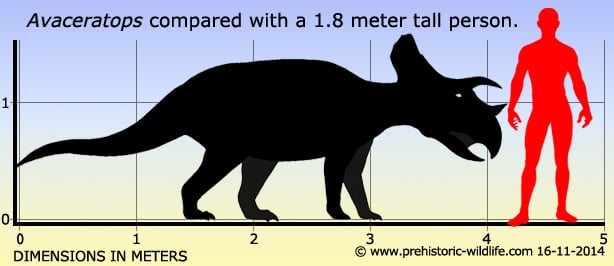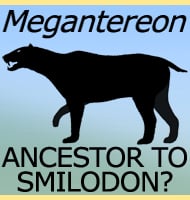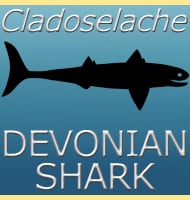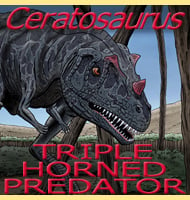In Depth
Avaceratops was a relatively small ceratopsian dinosaur from the late Cretaceous of North America. What makes its classification difficult however is the fact that its neck frill is short and lacks any fenestrae (openings), and with the exception of others like Triceratops, ceratopsians can usually be divided into either centrosaurine or chasmosaurine groups, although both have fenestral openings in their frills. This had led to Avaceratops being placed between these two larger groups with speculation that it may represent the ancestral form of Triceratops as well as possibly being a juvenile specimen which could account for its small body size and relatively small horns and frill.
The name Avaceratops is derived from Ava Cole, the wife of Eddie Cole who found the first fossil remains in 1981. The species name A. lammersi is in honour of the Lammers family who owned the land the fossils were found on. The fossil remains were found in what would have been a stream bed in the Cretaceous, and it’s thought that this dinosaur was washed there where the running water scattered the bones as it decayed.
Further Reading
– Avaceratops lammersi: a new ceratopsid from the Judith River Formation of Montana. – Proceedings of the Academy of Natural Sciences of Philadelphia 138(2):305-317. – P. Dodson – 1986. – The morphology of Avaceratops lammersi, a primitive ceratopsid from the Campanian of Montana. – Journal of Vertebrate Paleontology 13(3, suppl.): 52A. – P. G. Penkalski – 1993. – The morphology and systematics of Avaceratops, a primitive horned dinosaur from the Judith River Formation (Late Campanian) of Montana, with the description of a second skull. – Journal of Vertebrate Paleontology 19 (4): 692–711. – P. Penkalski & P. Dodson – 1999.









